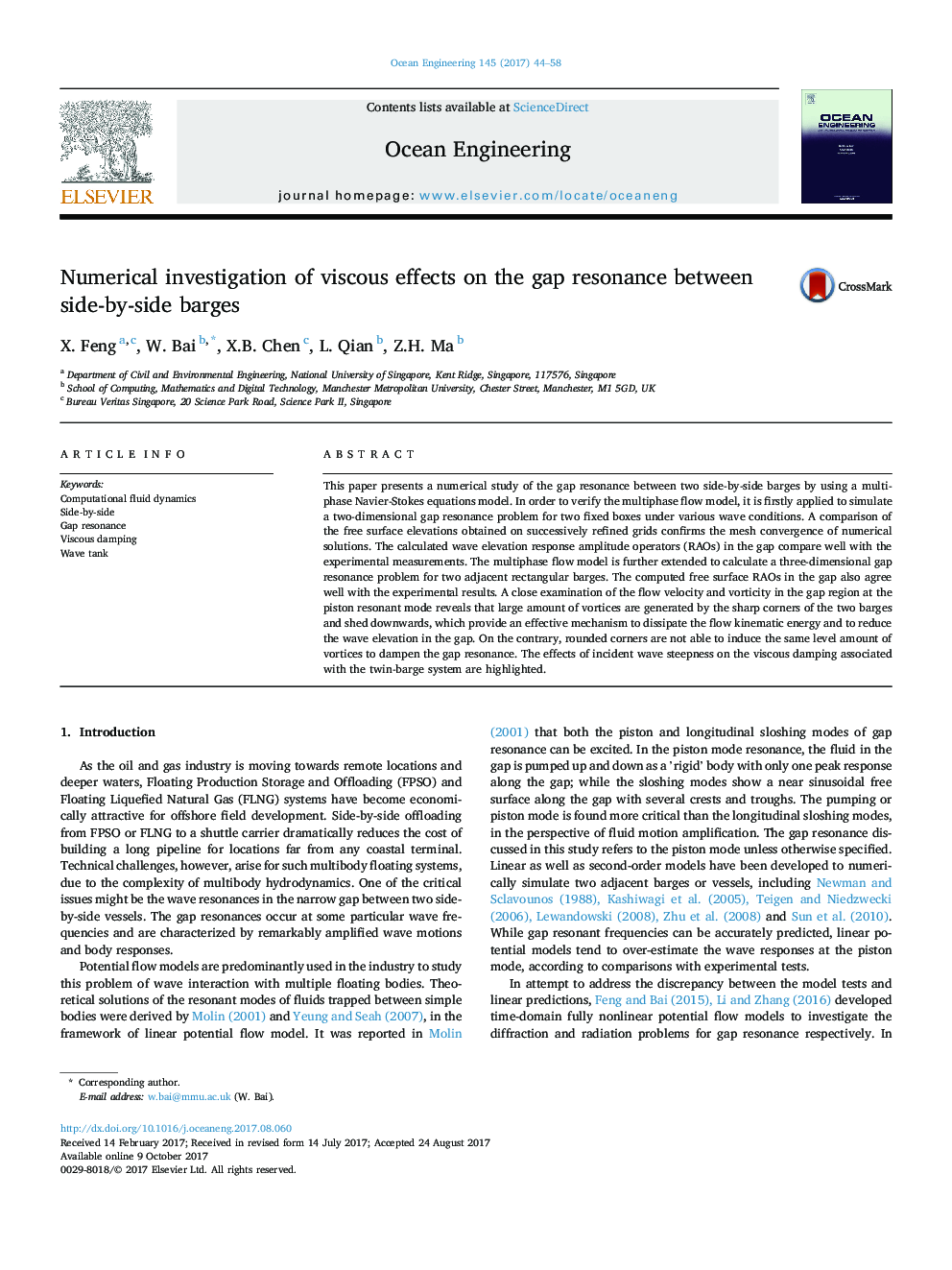| Article ID | Journal | Published Year | Pages | File Type |
|---|---|---|---|---|
| 5474091 | Ocean Engineering | 2017 | 15 Pages |
Abstract
This paper presents a numerical study of the gap resonance between two side-by-side barges by using a multiphase Navier-Stokes equations model. In order to verify the multiphase flow model, it is firstly applied to simulate a two-dimensional gap resonance problem for two fixed boxes under various wave conditions. A comparison of the free surface elevations obtained on successively refined grids confirms the mesh convergence of numerical solutions. The calculated wave elevation response amplitude operators (RAOs) in the gap compare well with the experimental measurements. The multiphase flow model is further extended to calculate a three-dimensional gap resonance problem for two adjacent rectangular barges. The computed free surface RAOs in the gap also agree well with the experimental results. A close examination of the flow velocity and vorticity in the gap region at the piston resonant mode reveals that large amount of vortices are generated by the sharp corners of the two barges and shed downwards, which provide an effective mechanism to dissipate the flow kinematic energy and to reduce the wave elevation in the gap. On the contrary, rounded corners are not able to induce the same level amount of vortices to dampen the gap resonance. The effects of incident wave steepness on the viscous damping associated with the twin-barge system are highlighted.
Related Topics
Physical Sciences and Engineering
Engineering
Ocean Engineering
Authors
X. Feng, W. Bai, X.B. Chen, L. Qian, Z.H. Ma,
